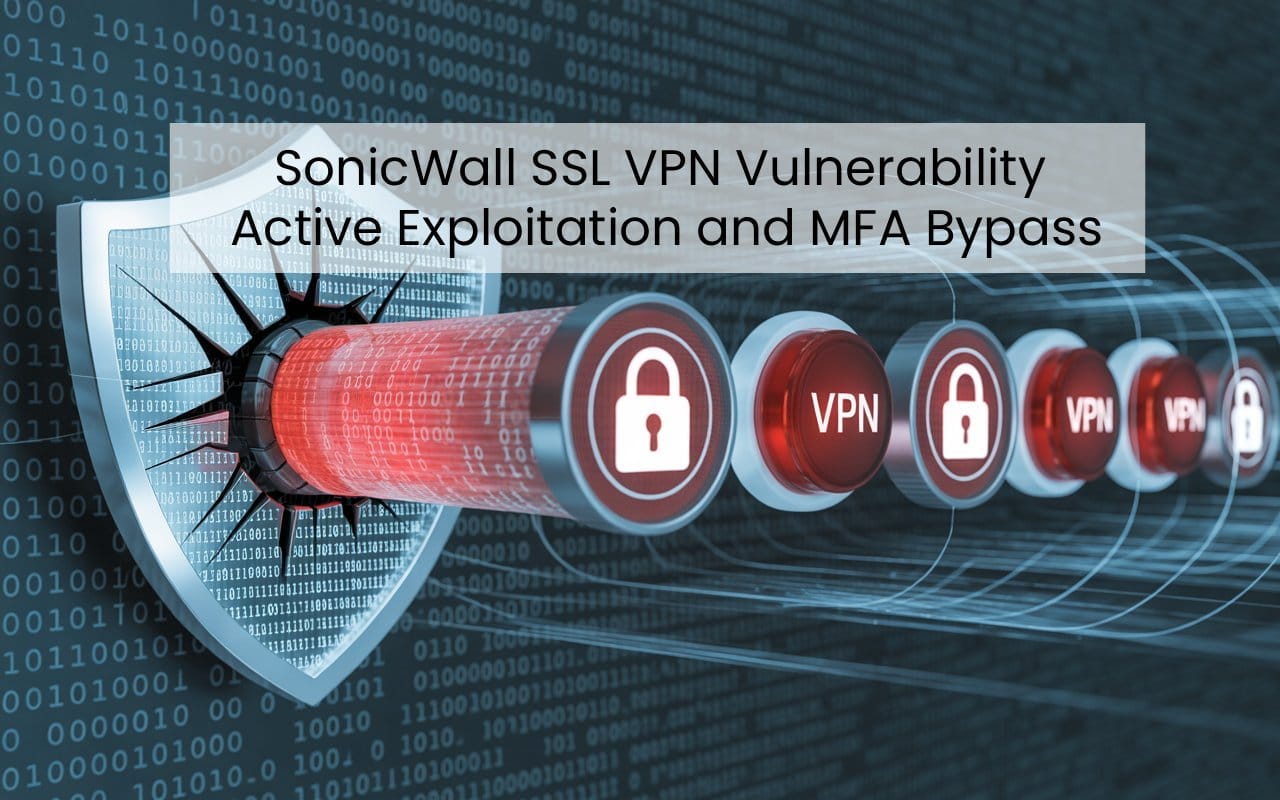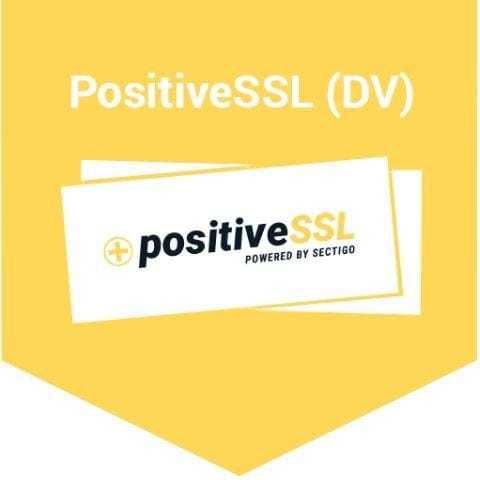Organizations worldwide face a critical security threat as multiple vulnerabilities in SonicWall SSL VPN devices have been actively exploited by threat actors, enabling them to bypass multi-factor authentication and deploy devastating ransomware attacks. These security flaws have emerged as one of the most significant enterprise security concerns in 2025, with attackers demonstrating the ability to compromise networks within hours of initial access.
Understanding the Vulnerabilities
CVE-2024-53704: SSL VPN Session Hijacking
The most critical vulnerability affecting SonicWall firewalls is CVE-2024-53704, an improper authentication flaw in the SSL VPN mechanism that allows remote attackers to bypass authentication entirely. This vulnerability impacts SonicOS versions 7.1.x (7.1.1-7058 and older), 7.1.2-7019, and 8.0.0-8035, enabling attackers to hijack active SSL VPN client sessions without any authentication credentials.
Security researchers from Bishop Fox successfully exploited this vulnerability, demonstrating that attackers can remotely hijack active VPN sessions, read user bookmarks, obtain client configuration profiles, and access private networks available to the compromised account. The exploit leverages a flaw in the processing of Base64-encoded session cookies, where the authentication mechanism fails to properly validate session data when null characters are present in the cookie string.bishopfox
CVE-2024-12802: MFA Bypass Through Account Name Exploitation
Another significant vulnerability is CVE-2024-12802, which allows attackers to bypass multi-factor authentication by exploiting the separate handling of UPN (User Principal Name) and SAM (Security Account Manager) account names in Microsoft Active Directory integration. This authentication mismatch permits unauthorized access even when MFA is properly configured, as attackers can exploit the alternative account name to circumvent security controls.
CVE-2024-40766: Improper Access Control
CVE-2024-40766, first published in August 2024, is an improper access control vulnerability in SonicOS management access and SSL VPN that can lead to unauthorized access and cause firewall crashes. This vulnerability has been actively exploited by the Akira ransomware group to gain initial access to networks, despite organizations having implemented MFA protections.
Active Exploitation Campaigns
Akira Ransomware Operations
Since July 2025, the Akira ransomware group has orchestrated coordinated campaigns targeting SonicWall SSL VPN devices across North America and Europe. These threat actors have demonstrated remarkable speed, moving laterally to domain controllers within hours of initial compromise and deploying ransomware to encrypt organizational systems.
Security researchers observed attackers gaining unauthenticated access to firewalls, bypassing both login credentials and multi-factor authentication mechanisms. Organizations using Gen 7 SonicWall firewalls with SSL VPN enabled and SonicWall Secure Mobile Access (SMA) appliances have been particularly vulnerable to these attacks.
Attack Timeline and Impact
| Date | Event | Impact |
|---|---|---|
| August 2024 | CVE-2024-40766 initially disclosed | Organizations begin patching vulnerable systems coalitioninc |
| January 2025 | CVE-2024-53704 patched by SonicWall | No evidence of exploitation reported initially bishopfox |
| July 2025 | Akira ransomware campaign begins | Multiple organizations compromised across North America and Europe kudelskisecurity |
| August 2025 | Active exploitation confirmed | Researchers detect suspicious activity including data exfiltration industrialcyber |
| February 2025 | CISA adds CVE-2024-53704 to KEV catalog | Active exploitation confirmed in the wild cybersecuritydive |
Industry Statistics and Financial Impact
The financial consequences of these vulnerabilities have been devastating for affected organizations. According to the 2025 SonicWall Cyber Threat Report, the average ransomware payment reached $850,700 in 2024, while total related losses often exceeded $4.91 million when factoring in downtime and recovery costs. This represents a five-fold increase over the ransom payment alone, highlighting the comprehensive impact of successful attacks.
Ransomware attacks have intensified significantly, with North America experiencing an 8% increase and Latin America witnessing an explosive 259% surge in ransomware activity. Organizations faced potential downtime averaging 68 days throughout 2024, representing 19% of at-risk revenue for many companies.
The healthcare sector has been particularly hard-hit, with 198 million Americans impacted by ransomware breaches in this sector alone. Business Email Compromise attacks, often facilitated by initial VPN compromises, now account for 33% of reported cyber insurance events, up dramatically from just 9% in 2023.
Technical Exploitation Methodology
Session Hijacking Mechanism
The exploitation of CVE-2024-53704 demonstrates sophisticated technical capabilities from threat actors. Attackers leverage a logic flaw in the session validation code where null characters in Base64-encoded cookies bypass authentication checks. The vulnerable function fails to include an “else” clause after checking for null characters in cookie strings, allowing attackers to skip validation entirely and obtain valid session identifiers.
By sending a GET request to the SSL VPN endpoint with a specially crafted cookie containing 32 null characters encoded in Base64, attackers can hijack the oldest active SSL VPN session on the firewall. This provides them with legitimate user credentials, network access permissions, and the ability to traverse private network segments authorized for the compromised account.bishopfox
MFA Bypass Techniques
The CVE-2024-12802 vulnerability exploits inconsistencies in how SonicWall SSL VPN integrates with Microsoft Active Directory. When organizations configure MFA independently for UPN and SAM account login methods, attackers can authenticate using the alternative account name format that lacks MFA requirements. This authentication mismatch creates a pathway for unauthorized access that circumvents multi-factor authentication controls entirely.
Mitigation Strategies
Immediate Actions Required
Organizations utilizing affected SonicWall devices must implement urgent mitigation measures to protect their networks. SonicWall recommends upgrading firmware to version 7.3.0, which includes enhanced protections against brute-force attacks and additional MFA controls. The updated release addresses vulnerabilities in environments that imported configurations from Gen 6 to newer firewalls.coalitioninc
For organizations unable to immediately upgrade, security experts recommend either disabling SonicWall VPN services entirely or restricting access using IP allow-listing until patches can be applied. The Cybersecurity and Infrastructure Security Agency added CVE-2024-53704 to its Known Exploited Vulnerabilities catalog, emphasizing the critical nature of these threats.cybersecuritydive+1
Long-Term Security Improvements
Beyond immediate patching, organizations should implement comprehensive security frameworks that reduce reliance on traditional VPN architectures. Security analysts emphasize the importance of transitioning to Zero Trust Network Access (ZTNA) architectures to enhance cyber resilience against evolving threats.cit-net
Organizations should also establish robust credential hygiene practices, regularly audit user access permissions, and implement behavioral monitoring to detect anomalous authentication patterns. Enhanced logging configurations can help administrators correlate access logs from multiple source IP addresses to single SSL VPN sessions, potentially revealing session hijacking attempts when suspicious source IPs are identified.cisecurity+1
Detection and Response
Identifying Compromised Systems
Detecting exploitation of these vulnerabilities presents significant challenges due to the nature of session hijacking attacks. Organizations should monitor for unusual patterns including network scanning and reconnaissance activities, lateral movement attempts, privilege escalation events, and unexpected data exfiltration from VPN-connected devices.
Security teams should investigate any instances where access logs show connections from multiple geographic locations or IP addresses associated with a single user session, particularly when accompanied by other suspicious behaviors. The presence of connections from known malicious IP addresses or autonomous systems previously linked to attack campaigns should trigger immediate investigation.
Incident Response Procedures
Organizations that identify potential exploitation should immediately isolate affected systems, reset credentials for all accounts that accessed the VPN during the suspected compromise period, and conduct comprehensive forensic analysis to determine the scope of unauthorized access. Security teams should examine domain controller logs for evidence of credential theft, review security tool configurations for signs of tampering, and assess whether attackers established persistent access mechanisms. kudelskisecurity
Broader Implications for VPN Security
The SonicWall vulnerabilities highlight systemic challenges facing VPN security in 2025. Attackers have increasingly recognized VPNs as high-value targets, understanding that compromising a VPN gateway provides access to entire networks. This pattern extends beyond SonicWall, with similar critical vulnerabilities discovered in Ivanti Connect Secure, Fortinet SSL-VPN, Palo Alto GlobalProtect, and Cisco Secure Firewall products throughout 2024 and 2025. todyl+3
The global VPN market, valued at $48.7 billion in 2023 and projected to reach nearly $150 billion by 2030, faces a security crisis as adoption grows alongside vulnerability discoveries. Organizations must recognize that VPNs represent significant attack surfaces that require continuous monitoring, rapid patching, and integration with comprehensive security architectures rather than reliance as standalone protection mechanisms. upguard+1
Conclusion
The active exploitation of SonicWall SSL VPN vulnerabilities demonstrates the evolving sophistication of modern cyber threats and the critical importance of proactive security measures. Organizations must urgently assess their exposure to these vulnerabilities, implement recommended patches, and consider broader architectural changes to reduce reliance on traditional VPN models. The substantial financial and operational impacts documented across numerous attack campaigns underscore that addressing these vulnerabilities represents not merely a technical requirement but a fundamental business imperative for organizational resilience in 2025.
Related Products
- Comodo
PositiveSSL Certificate (DV)
₹1,450.00/year Select options This product has multiple variants. The options may be chosen on the product page

